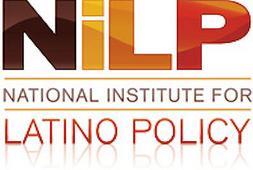
NiLP Guest Commentary
The New Cop in Town: The New Police Commissioner and Majority-Minority New York
By Hector W. Soto
The NiLP Report
 By all accounts, New York City's forthcoming Police Commissioner, current
Chief of Department James (Jimmy) O'Neill, is an affable and honorable
man. He comes to the job with a wealth of experience as a long-serving
member of the city's police department (as well as a city resident).
He is committed to improving police-Black/Latino community relations,
as evidenced by his support and enthusiasm for the Department's new
Neighborhood Policing Program. Chief O'Neil also seems to have a positive
relationship with most of the key players in City government whose actions
could impact on police department policy or practice. Overall, he has
sterling qualifications for the position, and though he will be following
one of the most renowned, if not recognizable, police executives in the
US, there is reason for optimism.
By all accounts, New York City's forthcoming Police Commissioner, current
Chief of Department James (Jimmy) O'Neill, is an affable and honorable
man. He comes to the job with a wealth of experience as a long-serving
member of the city's police department (as well as a city resident).
He is committed to improving police-Black/Latino community relations,
as evidenced by his support and enthusiasm for the Department's new
Neighborhood Policing Program. Chief O'Neil also seems to have a positive
relationship with most of the key players in City government whose actions
could impact on police department policy or practice. Overall, he has
sterling qualifications for the position, and though he will be following
one of the most renowned, if not recognizable, police executives in the
US, there is reason for optimism.
Notwithstanding all of his positive attributes, Chief O'Neill's selection by Police Commissioner William Bratton as his personally designated successor, followed by his instant confirmation by Mayor Bill De Blasio, may well have had more to do with the political reality that the Mayor needed not only a highly qualified individual but also someone who would be perceived, especially by the City's now "minority" White population as credible. Were the Mayor to fall short on this matter, the all-White male chief executives of the NYPD's six labor unions are ready at all times to fill the vacuum.
The political imperative was probably more pressing at this time given the looming specter of the Mayor's 2017 re-election bid than it was at the start of his tenure. Commissioner Bratton's abrupt resignation announcement clearly exacerbated the problem of the Mayor's waning support among NYC's Whites, and possibly among the City's Latinos as well. The appointment of Chief of Patrol Carlos M. Gomez to O'Neill's Chief of Department post, once it is vacated, appears to be an acknowledgment that the Mayor's Latino base may not be what it was at the start of his run and that he is concerned.
It should be clear to everybody that Chief O'Neill's ascension from fourth in line within the NYPD organizational chart to the top spot could easily be interpreted as an affirmative action decision for which race was one of many factors that were taken into consideration. African-American First Deputy Commissioner Benjamin Tucker, who will remain second in command at the NYPD and fully responsible for the Department whenever the Police Commissioner is absent or incapacitated, was also extremely well-qualified as well as ostensibly next in line to be the Police Commissioner.
Tucker being passed over for Chief O'Neill is not a slight to the First Deputy nor does it detract from O'Neill's designation. Indeed, it seems that the NYPD's number two spot was destined to be filled by an African-American from the start of the Mayor's run. The speculation concerning the initial appointment to that position of former Chief of Department (and presently scandal-ridden) Philip Banks followed by Benjamin Tucker'sascensionand appointment to the First Deputy position would seem to indicate that unquestionable qualifications aside racial and ethnic considerations were, and will probably continue to be, an integral part of the NYPD's executive selection process.
Race and ethnicity are also at the forefront of the daunting issues that Chief O'Neill will have to confront when he assumes the NYPD Commissionership in September. Continuing to improve public safety as assessed by crime rate statistics inclusive of preventing terrorism remain the primary objectives of the NYPD as well as that of most US police departments. That duty is also the specific primary responsibility of the department's chief executive officer. How Commissioner O'Neill achieves this objective within the dynamic context of improving police-Black/Latino community relations, instituting further police reform, avoiding profiling of any kind, upholding civil liberties and all the while accommodating the Mayor's forthcoming re-election bid are the issues the new Police Commissioner needs to address.
Police reform to make policing more equitable, less reliant on the use of unnecessary and excessive force (especially deadly force), more accountable to the public being served and more bias-free and professional on both the institutional and individual officer level are national as well as local concerns. For New York City, failure to further reform NYPD policies and practices is not an option. Too much has already happened and the process cannot be reversed, notwithstanding the outcries and threats of foreboding coming from the police union leadership. The 2014police killing of Eric Garner followed by the wanton murders of P.O.'sWenjian Liu and Rafael Ramos underscored the seriousness and critical nature of the consequences of not making reforms to how policing is done in New York City. The only real open questions are what other police reforms will be adopted, who will determine what those changes will be and when and how additional reforms will be implemented.
Police Commissioner O'Neill will not only have to handle the demands for further reforms coming from the Mayor, the City Council, local and national advocacy groups and others but do it with an understanding and respectfulness that his predecessor often lacked. Commissioner O'Neill would also do well to acknowledge and internalize that he is just one of many Commissioners running an administrative agency for the Mayor and that he is neither a solo act nor the final arbiter of the will or common good of the people. He and his agency may be more equal than all other City agencies, but in his future dealings with the City's chief executive, and especially when dealing with duly elected representatives of the City's majority Black-Latino population, the respect and deference the new Commissioner will expect he may need to demonstrate amply in advance. Otherwise, his pre-inaugural relations and good will may quickly dissipate.
Improving police-Black/Latino community relations is intimately intertwined with how the NYPD conducts its day-to-day business regarding crime fighting and order maintenance. Many of the City's presently proposed police reform measures grow out of problems or complaints regarding how the NYPD has in the past conducted its neighborhood-based operations and interactions: generally, a zero tolerance program enforced with hostility or indifference in the City's Black and Latino communities.
The City's new Neighborhood Policing Program of which Chief O'Neill is both an architect and strong supporter is just another variation of nominal community policing. Whether or not it succeeds will depend on two critical factors: firstly, is the community or neighborhood within the precincts where the program is being implemented in a true power-sharing partnership with the police in which there is mutual respect - will the problem-solving decisions be made jointly and will disagreements not be dismissed out of hand as confirmation of underlying anti-police sentiment; secondly, will the general context of policing in the city look like, smell like or feel like the nitpicking "broken windows" policies and practices of the past.
For the neighborhood policing program to be effective in improving police-Black-Latino community relations, Commissioner O'Neill will have to shift the existing police cultural paradigm so that the city's majority Black and Latino residents are viewed and treated by the police department as potential allies rather than potential enemies. He will also have to make sure that crime rates and class aside that there is not even the perception of disparate treatment of the City's Black-Latino residents as compared to its White residents. As concerns these matters, Commissioner O'Neill will have to do a much better job than his predecessor.
Finally, improving police-community relations does not imply that the issue of self-inflicted crime and violence in the City's Black and Latino communities is being addressed. Black-on-Black and Brown-on-Brown crime and violence are real. However, the police are neither the answer nor the vehicle for addressing such concerns. The causation of self-inflicted crime and violence in the City's Black and Latino communities lies in the history of slavery, racialization and the racial-ethnic caste system that exists in New York and America. Local, state and federal governments as historical accomplices to that history bear today a unique and heavy burden regarding efforts to undo any remaining structures that inflicted the harm on these communities. The government also has the related burden concerning the efforts to remedy the present-day social and economic consequences of that harm. Police reform is a part of that process, but not the answer to the issue of self-inflicted crime and violence.
For all of his good intentions and future best efforts, Commissioner O'Neill ultimately can only deal with crime and violence in the City's Black and Latino neighborhoods by arrest, incarceration and other tactics of suppression and punishment. Past widespread use of these tactics resulted in the United States having the greatest prison population in the world, approximately two million people the majority of whom being Black or Latino even though most crime, 70%, in the United States is committed by Whites. Use of those tactics also resulted in the current police-Black/Latino community estrangement that confronts New York City and the nation (the Justice Department's newly released report on policing in Baltimore [August 9th] is America's latest exclamation point on the crisis).
Moreover, Commissioner O'Neill and his 34.000 NYPD members of the service do not and will not have the moral standing or authority required to more to engage with the problem in a more positive manner. That moral standing and authority belong to the community and imposes a moral and cultural imperative that only the community can exercise. The government, including law enforcement, will have to provide supports of various kinds. That will be the obligation and contribution of the reigning Black-Latino political leadership, but the work on the ground on the problem of community self-inflicted crime and violence can only be done by credible members and leaders of those communities in the neighborhoods where they live. The imperative exists notwithstanding that fault and causation for the problem lie outside of the community. When and how the Black and Latino communities of New York City (and beyond) engage with the issue of self-inflicted violence and crime are the open questions that run parallel to those facing New York City's soon-to-be new Police Commissioner.
What hangs in the balance is whether or not the majority of future New York City residents will share the perception that the City is a safe, stable and secure hometown composed of vibrant neighborhoods supported by their local police. Or will the majority perceive the City as a mere collection of balkanized and competing for racial-ethnic enclaves where the local police impose order and, in so doing, become part of the problem? Soon-to-be Commissioner O'Neill and the residents of New York City have much to ponder.
Hector W. Soto, J.D., is a civil rights lawyer, activist, and an Assistant Professor in the Behavior and Social Science Department of Hostos Community College. He was formerly the first Director of the Civilian Review Board in NYC under Mayor David Dinkins. He can be contacted at hsoto@hostos.cuny.edu